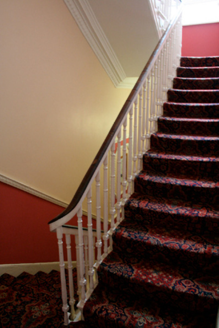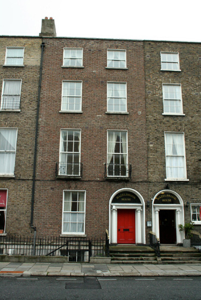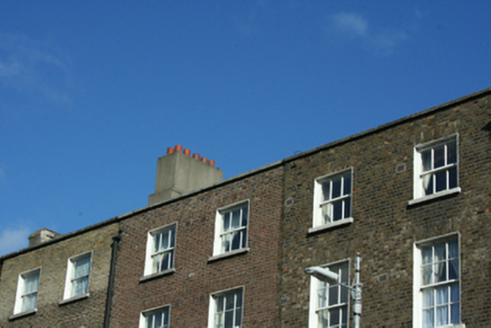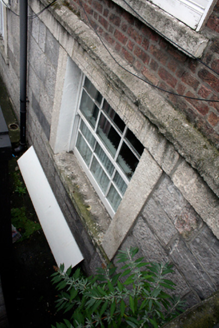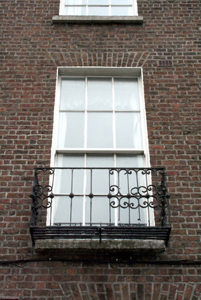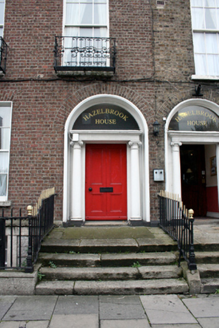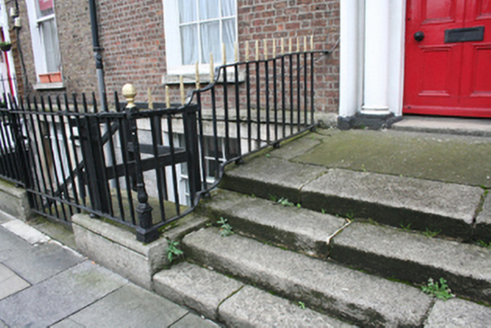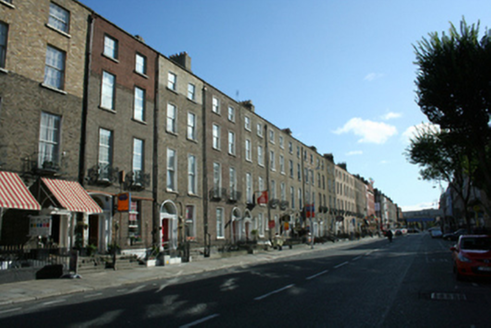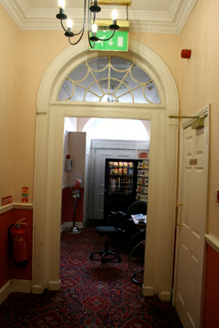Survey Data
Reg No
50010181
Rating
Regional
Categories of Special Interest
Architectural, Artistic
Original Use
House
In Use As
Guest house/b&b
Date
1810 - 1830
Coordinates
316255, 234899
Date Recorded
11/10/2011
Date Updated
--/--/--
Description
Terraced two-bay four-storey house over raised basement, built c.1820, now in use as guest house. Pitched and hipped slate roof having red brick parapet wall with squared granite coping, rendered chimneystack and replacement uPVC rainwater goods. Flemish bond red brick walls with moulded granite plinth and string course over squared, dressed limestone wall to basement. Diminishing square-headed window openings with patent rendered reveals, granite sills and replacement timber sliding sash windows in three-over-three and six-over-six pane arrangements. Decorative cast-iron balconettes to first floor openings. Flush squared granite surround to basement window. Round-headed door opening with gauged brick voussoirs, rendered reveals and moulded doorcase comprising Ionic columns on squared plinths, surmounted by fluted architrave, cornice and single-pane overlight. Timber panelled door opening to granite flagged platform and approach bridging basement area. Square-headed door opening to basement with replacement timber panelled door. Approach flanked by cast-iron railings with corner posts, returning to enclose basement area on moulded granite plinth. Replacement metal gate and concrete steps granting access to basement area. Rear of plot entirely built up containing series of connected buildings and extensive roof-lit two-storey warehouse mews building fronting onto Mabbot Lane. Interior modified significantly to allow Nos. 85 and 86 to be used as single guesthouse, with openings to party wall at all levels. Original staircases retained in both properties. Original interior timber door with moulded surround and timber cobweb fanlight to No. 86. No original plasterwork evident.
Appraisal
Dating from the early nineteenth century, this well-appointed house forms an integral component of Gardiner Street Lower, a significant streetscape in the north Georgian city. The building has maintained much of its historic character with its pleasant doorcase providing the well-balanced façade with a strong focus, while historically sympathetic replacement sash windows fit well within the building's overall style. The survival of an original staircase and other interior features enhances its architectural heritage value. Gardiner Street Lower was developed by Luke Gardiner in the late eighteenth century, with leases dating from the 1790s. Gardiner Street Lower formed part of Gardiner's route from Beresford Place to Mountjoy Square, and No.89 forms part of a surviving terrace along this street.
